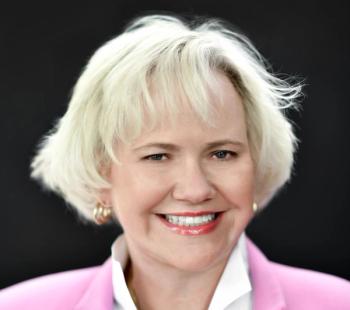
Cancer centers see greater demand, and struggle to handle volume
Nearly half said they are out of room, and leaders cite other operational challenges hindering their ability to serve more patients.
Cancer centers are seeing increased demand, but some are at capacity and say they don’t have the room to handle additional patients.
That’s one of the key findings of a new report released Wednesday by the Association of Community Cancer Centers and LeanTaaS, an AI-based healthcare analytics company.
Cancer centers are getting busier. Nearly 2 million new cancer cases are expected in the United States in 2022, an increase of 5% since 2020, according to the
In a survey of nearly 100 cancer center leaders, 40% of respondents said their infusion centers were out of space and they would have to expand their facilities to serve more patients. An additional 13% said they didn’t have the resources to add infusion chairs or expand their facilities to handle greater volume.
“The resource constraints infusion centers face include limited infusion chairs, nurse shortages, and pharmacies that are not able to keep up with drug demand. Infusion centers have always been challenged by finite physical resources, and the effects of COVID-19 only exacerbated these capacity constraints,” the report stated.
In addition, cancer center leaders cite some other operational challenges that are hampering their ability to serve patients and manage staff effectively, according to the report.
- Read more:
Hospitals are looking at ‘very bumpy 2023’
The vast majority of cancer center leaders (81%) said they were using nurse assignment strategies that weren’t ideal, and some nurses were dissatisfied. Nearly half (47%) said they were using modified shifts and temporary or travel nurses to deal with staffing shortages.
“Some infusion centers can afford to contract travel nurses or sponsor overseas nurses. Facilities that cannot afford these options struggle with recruiting and retention. Pressure on nurses and staff, who are already afraid their exhaustion may create an adverse effect on patient care, has intensified,” the report stated.
Hospitals and health systems said
In addition, nearly half (49%) of cancer centers said they are tracking operational performance manually in spreadsheets. The report described doing such work manually as “inefficient, a resource drain, and prone to human error.”
Health systems and cancer centers are going to need to find ways to manage staffing and patient volume more effectively, especially if they are constrained by space limitations in their facilities, said Ashley Joseph, vice president of client services for infusion centers at LeanTaaS.
“The reality is hospitals and health systems are in the most financially difficult year since the start of the pandemic, and the only sustainable and reasonably quick way to meet increased demand – while still providing safe, high quality patient care – is to unlock capacity in existing facilities, through a combination of technology and smart operational choices,” Joseph said in a statement.






















































































